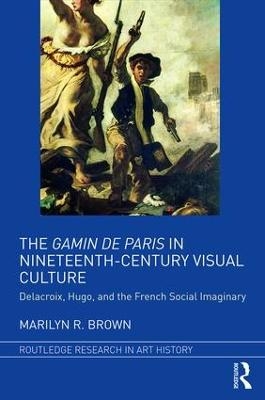
The Gamin de Paris in Nineteenth-Century Visual Culture
Routledge (Verlag)
978-1-138-23113-9 (ISBN)
- Titel z.Zt. nicht lieferbar
- Versandkostenfrei
- Auch auf Rechnung
- Artikel merken
The revolutionary boy at the barricades was memorably envisioned in Eugène Delacroix’s painting Liberty Leading the People (1830) and Victor Hugo’s novel Les Misérables (1862). Over the course of the nineteenth century, images of the Paris urchin entered the collective social imaginary as cultural and psychic sites of memory, whether in avant-garde or more conventional visual culture. Visual and literary paradigms of the mythical gamin de Paris were born of recurring political revolutions (1830, 1832, 1848, 1871) and of masculine, bourgeois identity constructions that responded to continuing struggles over visions and fantasies of nationhood. With the destabilization of traditional, patriarchal family models, the diminishing of the father’s symbolic role, and the intensification of the brotherly urchin’s psychosexual relationship with the allegorical motherland, what had initially been socially marginal eventually became symbolically central in classed and gendered inventions and repeated re-inventions of "fraternity," "people," and "nation." Within a fundamentally split conception of "the people," the bohemian boy insurrectionary, an embodiment of freedom, was transformed by ongoing discourses of power and reform, of victimization and agency, into a capitalist entrepreneur, schoolboy, colonizer, and budding military defender of the fatherland. A contested figure of the city became a contradictory emblem of the nation.
Marilyn R. Brown is author of Degas and the Business of Art: A Cotton Office in New Orleans (CAA Monograph, 1994) and editor of, and contributor to, Picturing Children: Constructions of Childhood Between Rousseau and Freud (Ashgate, 2002; Routledge 2017). She is professor of art history at the University of Colorado.
Table of Contents
List of Illustrations
Acknowledgments
Introduction
Ch. 1 Revolutionary Ancestors of the Gamin de Paris
Ch. 2 Child of the People and Child of the Fatherland in Nineteenth-Century French Social History
Ch. 3 Child of the People and Child of the Fatherland in the French Social Imaginary
Ch. 4 The Gamin de Paris and the Revolution of 1830
Ch. 5 The Gamin de Paris in Panoramic Literature and in the Revolutions of 1848
Ch. 6 The Gamin de Paris, the Second Empire, and the Commune
Ch. 7 The Gamin de Paris during the Early Third Republic
Epilogue
Bibliography
| Erscheinungsdatum | 12.07.2017 |
|---|---|
| Reihe/Serie | Routledge Research in Art History |
| Zusatzinfo | 24 Halftones, color; 37 Halftones, black and white; 24 Illustrations, color; 37 Illustrations, black and white |
| Verlagsort | London |
| Sprache | englisch |
| Maße | 174 x 246 mm |
| Gewicht | 510 g |
| Themenwelt | Kunst / Musik / Theater ► Kunstgeschichte / Kunststile |
| Geschichte ► Allgemeine Geschichte ► Neuzeit (bis 1918) | |
| Geisteswissenschaften ► Geschichte ► Regional- / Ländergeschichte | |
| Geisteswissenschaften ► Sprach- / Literaturwissenschaft ► Anglistik / Amerikanistik | |
| Geisteswissenschaften ► Sprach- / Literaturwissenschaft ► Literaturwissenschaft | |
| Sozialwissenschaften ► Soziologie | |
| ISBN-10 | 1-138-23113-4 / 1138231134 |
| ISBN-13 | 978-1-138-23113-9 / 9781138231139 |
| Zustand | Neuware |
| Haben Sie eine Frage zum Produkt? |
aus dem Bereich


